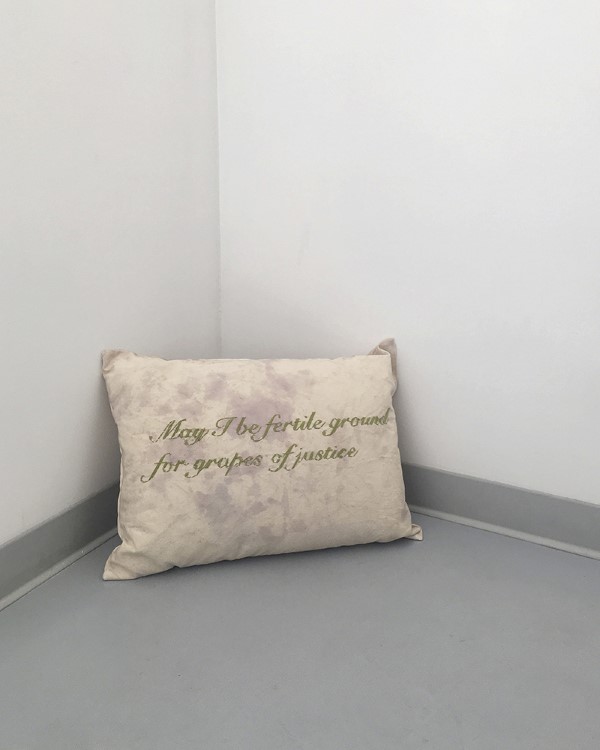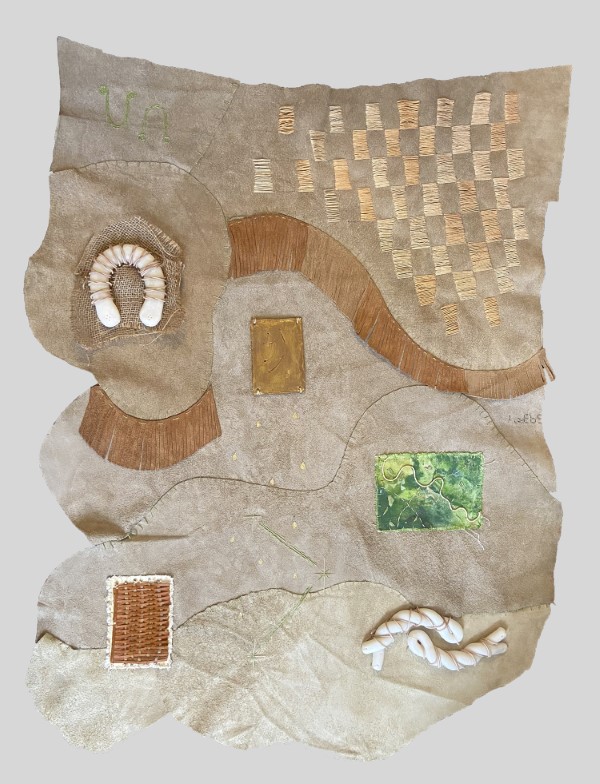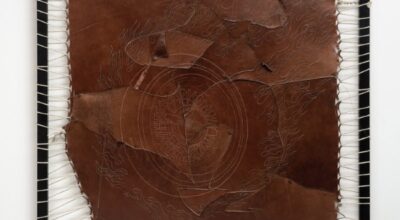
HILOS
LatchKey Gallery presents Hilos, an exhibition by the gallery’s inaugural Curator in Residence, Maya Ortiz Saucedo. The exhibition features emerging Latinx artists Benjamin Lundberg Torres Sánchez, Elvia Carreon, Luis A. Sahagun, Rosalee Bernabe and Susan Flores-Melgar, whose works intimately analyze generational identity through a decolonial lens.
Hilos is a response to the way craft is framed within Western institutions displaying Latin American, Indigenous and Caribbean Art. Historically these works are shown within a “primitive” lens of the past, and disregard the continuous ripples of colonization that have been woven into the fabric of Latinx identity and history. Craft in Latinx, Indigenous, and Caribbean histories has become an important “hilo” (thread) in connecting generational and ancestral knowledge, and a key vehicle in deconstructing and reconstructing contemporary Latinx identity. The artists of Hilos examine these threads that connect their relationships with craft materials, techniques, and traditions.




Each artist engages with different levels of intimacy and proximity to their own histories in their applications of craft. The scale and juxtaposition of small intricate paintings against ceramic frames in the works of Susan Flores-Melgar (b. 1996) nod to the relationship within domestic and communal environments and reframe the gallery walls into a familiar home space. As a first generation Salvadoran-American visual artist born in Queens, New York, her work draws on familial history, friendship and shared Latinx cultural narratives in her community, through painting, ceramic and textile.
Similarly, the large scale of Elvia Carreon’s paintings investigate community through the use of portraits that display maternal connections within her own family. Her works integrate craft elements such as textiles, crochet and hair braiding to physically resemble womanhood through multiple generations. She showcases intimate experiences within her family and investigates the way oral narrative influences intergenerational bondings. This form of “chisme” or gossip culture shapes the information shared in her work and further explores the nuances of language, gender, religion, nationality, and sexuality. Portraiture is also utilized in the works of Rosalee Bernabe. Her use of leather and familial archival references and photographs turn familiar objects into narrative portraits of community and colonial history shared between the United States, Mexico and the Philippines.


The works of Benjamin Lundberg Torres Sánchez (b. 1987, Bogotá) and Luis Sahagun (Guadalajara, Jalisco, Mexico, 1982) examine physical and genetic relationships of body and colonialism within craft. Like DNA strings of mestizaje, Sahagun’s practice confronts contradiction—indian/conqueror, violence/unity, and ancient/contemporary. As an immigrant and former laborer, Luis seeks to reveal the aesthetics of relocation and transgenerational trauma by utilizing building materials such as silicone, lumber, drywall, concrete, and hardware as symbols that represent working class immigrants in this country. He cultivates civic activations for community members, students, and other educators alike. A unique element fueling his social art practice is his experience growing up feeling invisible to society because he was Brown, undocumented, and poor, making him privy to perceptions that most people have not been exposed to. He uses the residue of those traumas to guide the development of meaningful performances, public interventions, discussions, and workshops.
Torres Sánchez crafts from their physical body, through performance with the inclusion of blood drawn by venipuncture, to reexamine the use and effect of blood quantum. As a queer person who was separated from their family by a private adoption process, their work resists ways the state and institutions hijack individual and collective bodies to fulfill their own performances of power and construction of imaginary borders.


Hilos will be on view at LatchKey Gallery (173 Henry Street, New York, NY) from July 8th, to August 7, 2021.
También te puede interesar
OPERATIONAL EXCELLENCE
In a moment when cryptocurrency has swiftly become a global phenomenon, this exhibition considers the ways in which dematerialized currency and the ostensible abstraction of value still have tangible impacts. Requiring access to the...
JOSÉ DE JESÚS RODRÍGUEZ AND ESTEBAN RAMÓN PÉREZ: SOBRE LAS OLAS
What Jose and Esteban show is that this in-betweenness is useful, both aesthetically and elsewhere. It is the place of nepantla—that generative space between here and there, between abstraction and figuration, between the parts...
Mundos Alternos:art And Science Fiction in The Americas
"Mundos Alternos: Art and Science Fiction in the Americas" brings together the work of 30 international artists from across Latin America and the Caribbean, including Mexico, Cuba, Argentina, El Salvador, Brazil, Chile and Puerto...



